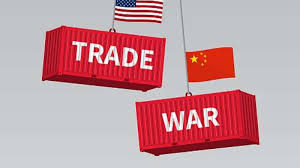
The protracted trade war between the United States and China has seen a gamut of analysis and predictions regarding its effects and direction, indicative of the growing concerns gripping the global economic community.
Reflecting on the analysis while gauging the current regional and global economic climate, PAS Central’s Economic, Real Estate and Entrepreneur Development Committee opines that the tensions are not as destructive nor chronic as many might feel. Our views are based on two salient – yet by necessity competing – factors:
1. The American economy is to an extent dependent on liquidity support from China. Consider the fact that China is the single largest foreign holder of American debt issued by the U.S. Treasury. As of May 2019, China held USD1.1 trillion in U.S. Treasury bills, notes and bonds, amounting to 5% of U.S. debt.
This dependence on Chinese money is crucial with respect to domestic market activity, particularly in the retail sectors. The yuan has leaned on the dollar, for the good part of two decades, invariably strengthening Chinese exports to the U.S. and maintaining American domestic purchasing power as a direct consequence of the generally cheaper Chinese goods flooding its retail markets.
In this highly co-dependent situation, it is simply impossible for Washington to sustain any significant pressure on Beijing for a prolonged period of time. Any threat by the Chinese to liquidate even a portion of their holdings would be disproportionately destructive to the US, particularly within the retail sector, which contributes 6% to the GDP and is supported largely by the 164 million middle class Americans, or 50% of the population. Any potential for damage to their livelihoods of this proportion, particularly in an election year, would prove disastrous to the incumbent.
2. Beijing’s has always sought to keep the yuan low relative to the dollar. It does this by pegging the Yuan to a basket of currencies, in which the dollar is the largest. Large or prolonged depreciations in the dollar, relative to the other currencies, are countered by increasing their purchases of U.S. bonds – driving the dollar up – and maintaining its difference, and by extension its export advantage, in the longer run.
This is done to ensure that the Chinese economy, with 1.3 billion mouths to feed, maintains the highest rates of growth possible for as long as possible. Therefore to maintain this advantage, particularly with the dollar beginning to depreciate again in 2018 after 4 years on the ascent, Beijing has to continue buying up even more U.S. Treasuries, as opposed to selling them.
As with the U.S., a prolonged fall in the yuan will also affect the more than 420 million middleclass Chinese. China’s economy has, on average, grown by 10% annually for the last three decades. It has slowed down recently, and Beijing will be keen to do all it can to protect this growth, and by extension its influence, for its burgeoning middle-class.
This symbiosis of competing factors will inevitably ensure that both Washington and Beijing will exert the utmost caution in their trade relations. Regardless of the rhetoric emanating from both sides, the fact is they both need each other more than either would openly concede. A prime example of this is the recent lifting of the ban on Chinese telecommunications giant Huawei, despite the furore preceding it.
We therefore project that the current stand-off between the U.S. and China is not necessarily a cause for worry, and will end sooner than later.
MAZLI NOOR
Vice Chairman
PAS Central’s Economic, Real Estate and Entrepreneur Development Committee
30 Zulhijjah 1440H
31st August 201






